Planning a backyard orchard
Winter is the time to plant deciduous fruit trees while the soil is moist, the air is cool and trees are dormant, so planting is less stressful for them. Also, it’s a great time to buy while there is the best range to choose from.
Whether you’re planting a single tree or an entire orchard, take time to consider which fruit trees will best suit your space and family needs. Careful planning and soil preparation before planting will ensure you get the best results for your efforts.
Sun and soil
Fruit trees need as much sun as you can give them and well-drained soil is essential. Fruit trees will fail to thrive, or worse - die of root disease, if their roots are sitting in wet ground for too long. However, both heavier soils and sandy soils can be improved by adding organic matter such as compost and sheep pellets. Improving the soil is the best thing you can do for your trees.
Measure up the space available for a new trees and consider the size and spread of the trees to make sure you’re not in an overcrowding situation. More sunlight on trees means more fruit.
Where there is space a beautiful spreading fruit tree doubles as an ornamental tree offering shade in summer and beautiful spring blossom. Or you may have a sunny wall or fence line that’s just the place for an espaliered fruit tree.
Choosing trees
Consider climate
Some trees need a winter chill for best fruiting, others may need frost protection. For example popular Apricot ‘Moorpark’ is best suited for cooler climates, while dwarf Apricot ‘Aprigold’ is well-suited to warmer parts of the country. Check at your garden centre for the best varieties to grow in your climate.
What size tree suits your needs?
Dwarf and semi dwarf trees take the least amount of space, offering the ability to grow a great selection of different fruits in a smaller garden. Dwarf trees also have ‘precocious’ tendencies, meaning they bear fruit from a young age. Standard sized trees need the most space (unless you train them as an espalier) and they take longer to bear fruit, but have a fruiting life of many decades. Super slim Ballerina apple trees grow soldier straight with fruit clusters held close to the trunk, so they’re perfect for narrow spaces or in a pot on a patio.
Pay attention to ripening season
By planting trees with different ripening times, you can achieve a continuous supply of fruit to pick for six months or more. For example, combining apple varieties ‘Gala’, ‘Pacific Rose’ and late ripening, long keeping ‘Splendour’ will keep you picking from February through May. Similarly, planting a trio of dwarf, self-fertile Peach ‘Pixzee’, Nectarine ‘Flavourzee’ and Apple ‘Blush Babe’ will keep the family fruit bowl full from Christmas till Easter. Add a couple of feijoa trees and a selection of citrus and you’ll have fruit to pick all year round.
Does your tree need a pollinator?
While some fruit trees need a pollinator growing nearby (this could be a neighbours tree), others are self-fertile. Sweet and juicy ‘Luisa’ plum, for example, produces huge crops from a young age without the need for a pollinator tree. Dark red ‘Billington’ plum is another self-fertile variety. Other fruit trees will happily go solo but produce much bigger yields when a pollinator tree is nearby.
Plant the fruit that your family most likes to eat.
Most fruit is delicious when eaten straight from the tree, but you might also want to grow fruit for freezing, baking or preserving. A kiwi favourite for generations, Golden Queen peach is an old favourite both for bottling and eating fresh.
10 ways to grow more fruit in less space
| 1 | Replace old and under-performing trees. If the fruit is of poor quality and the yield is low, make space for something new. A temporary reduction in yield while waiting for a new fruit tree to grow is a small price to pay. |
| 2 | Soil matters. Fruit trees will produce poorly in poorly drained soil, but much can be done with soil conditioners and composting. Alternatively, plant in raised beds or large containers with better drainage. |
| 3 | Feed and water. How much you need to do this depends on the type and quality of your soil. Young establishing trees need the most watering. Trees in sandy soil and those grown in pots need the most watering and feeding. |
| 4 | Prune for productivity. Maintaining your fruit trees with the right kind of pruning helps keep them free of diseases and allows light into the tree, which ultimately means tastier fruit and more of it. Thinning to lighten a crop load makes for larger fruit at harvest. |
| 5 | Pay attention to pollination. Check if your chosen variety needs a pollinator variety for peak productivity. Grow flowers that will help attract pollinators to your fruit trees. |
| 6 | Make the most of wall space. Espaliering is both highly decorative and an efficient way of growing more fruit less space, training trees flat along a sunny wall or fence. |
| 7 | Small trees with big yields. Space-saving dwarf trees produce a very high volume of fruit that belies their compact size. |
| 8 | Extend the harvest. Plant fruits that mature at different times of the year to enjoy longer picking season and avoid gluts. |
| 9 | Multi-purpose. If you need a hedge make it a fruiting hedge. Feijoas are great as screens and tough enough to act as shelter for other trees. |
| 10 | Clever combos. If there is room for only one tree in the garden, consider a multi-grafted tree with two or three different varieties (with different harvest times). Or create your own ‘family tree’ whereby three or four pip or stone fruit varieties can be planted together as one tree. Read more about this technique at waimeanurseries.co.nz |
1-Jul-2021
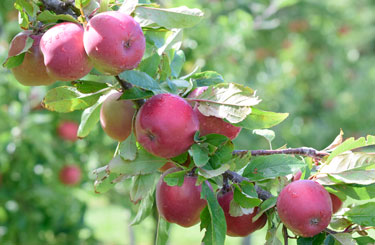
Home grown apples ready to pick
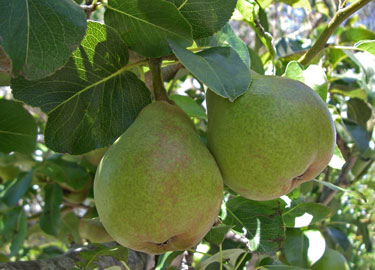
Pears, ready for picking.
Pick pears when firm and allow to ripen off the tree.
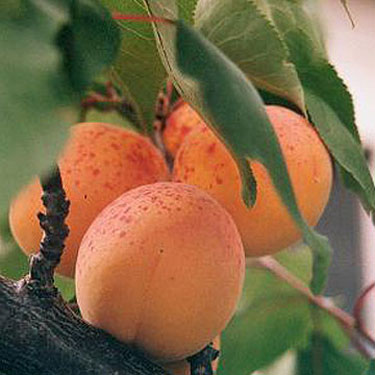
Apricots are a favourite but require cool winters to set fruit.
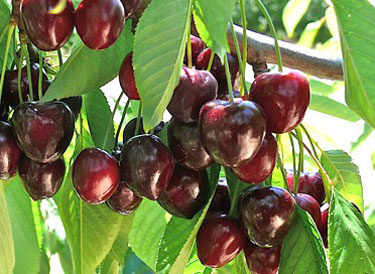
Cherries are a treasured fruit at Christmas. Choose a variety that will grow in your area.
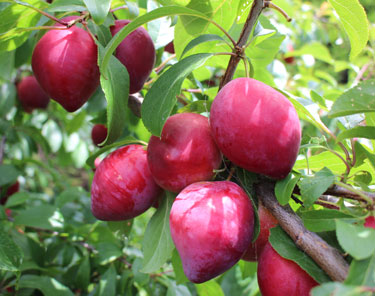
Plums come in many varieties with fruit of different skin colour, flesh colour and ripening time. Many plums need a 'friend' to pollinate them.
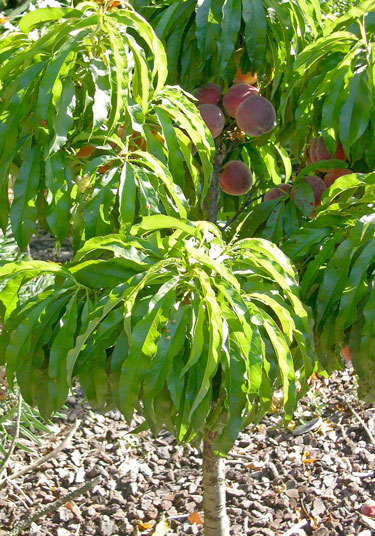
Peach Pixzee
Dwarf fruit trees take little space for the same sized fruit, and can be grown in containers.
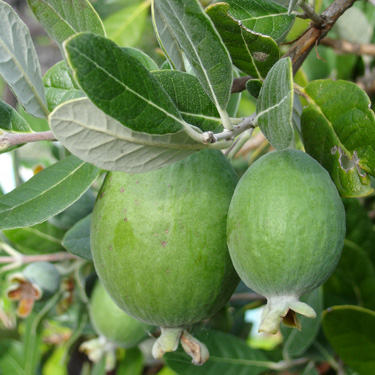
Feijoas have thick greyish leaves that tolerate wind and sea salt, so are great to use for shelter.


